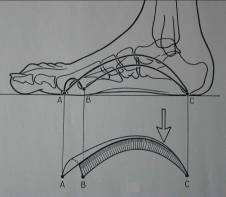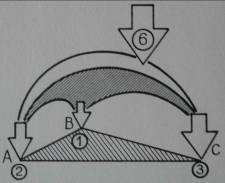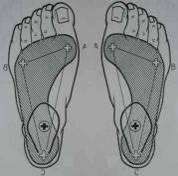TopicId117
PoData allows you to perform a measurement without forcing a patient to position his / her feet in a precise point on the platform, because PoData uses a virtual positioning of sensors on contact points to be measured through an easy software procedure.
This feature enables the patient to assume a more natural posture, suitable for his / her age and physical structure.
The analysis and measurement will not be affected by differences in foot positioning between two examinations performed at different times, since the cells used to measure the load acting on the three contact points (calcaneus, first and fifth metatarsal) will be repositioned (by the operator who performs the analysis) for each examination. This will allow for proper comparison of differences (if any).
More specifically, the points to measure for each foot and under which virtual sensors will be positioned are the following:
The foot is fundamental for dynamic and postural functions; following the studies by French biomechanics expert Kapandji, the sole of the foot can be seen like a vault supported by three arches.
Body weight transmitted to the lower limb is applied to the rear tarsus at the height of the trochlea tali. From there, forces are distributed in three directions, towards the vault contact points.



Kapandji also quotes the studies by Morton, who noticed that, generally speaking, weight is distributed over the vault's three contact points according to the rule of six:
when 6 Kg are applied to the astragalus, 1 Kg is loaded on the antero-external contact area, 2 Kg on the antero-internal contact area and 3 Kg on the heel.
In an upright, vertical and motionless position, it is the heels that bear the greatest stress, half of the body's weight.
Stabilometry has introduced measurement in the observation of phenomena associated with orthostatic postural control.
This allows providing data that are useful for setting irrefutable categories as they are confirmed statistically.
Thanks to stabilometry, we now know the distribution of a certain number of parameters that characterize a “standard” orthostatic posture behavior.
It is therefore possible to determine whether the behavior of a patient can be included within the limits established as standard by such parameters.
With Podata we make the most of the advantage of being able to position the cells and thus customizing the test for the patient. The patient is no longer required to assume unnatural positions and we can provide the final result with unparalleled repeatability.